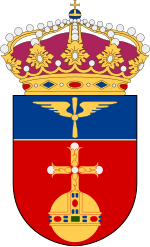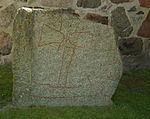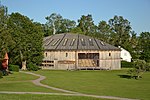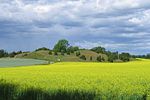Ärna Air Base
Bases of the Swedish Air ForceBuildings and structures in Uppsala County
Ärna or Uppsala Air Base (ICAO: ESCM) is an air base located northwest of Uppsala, Sweden. It is a base of the Swedish Air Force. In 2009, it was announced that the Armed Forces had the intention to phase out its airport unit on 1 July 2010 and hand over the operation of the aerodrome to a private operator. However, on 19 December 2009, it was announced by the Supreme Commander that the Armed Forces will continue military air operations. This is because the alternative proposals to locate the flight operations were not feasible. Since 14 October 2021, Uppland Wing (F 16) is based at Ärna Air Base.
Excerpt from the Wikipedia article Ärna Air Base (License: CC BY-SA 3.0, Authors).Ärna Air Base
Libro Ringväg, Uppsala
Geographical coordinates (GPS) Address Nearby Places Show on map
Geographical coordinates (GPS)
| Latitude | Longitude |
|---|---|
| N 59.897222222222 ° | E 17.588611111111 ° |
Address
Libro Ringväg
752 28 Uppsala
Sweden
Open on Google Maps







